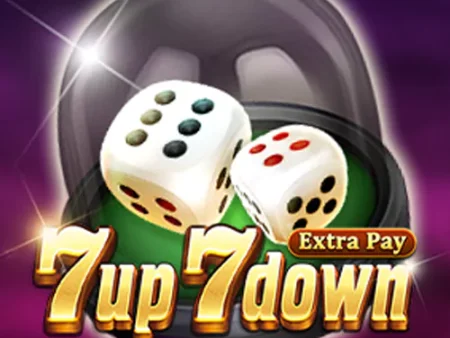Heads or Tails Game
The heads or tails game, commonly known as coin flipping, is one of the oldest and simplest forms of chance-based decision-making. It involves tossing a coin into the air and observing which side it lands on—heads or tails—to resolve disputes or make decisions. While it’s an everyday activity for some, this practice has deep historical roots and interesting applications, from casual games to serious rituals. Below, we detail everything you need to know about the heads or tails game, including how to play, its history, various uses, and answering some frequently asked questions.
The History of Coin Flipping
Coin flipping has been part of human culture for centuries, with its origins traced back to ancient Rome. The Romans referred to it as “navia aut caput,” which translates to “ship or head,” based on the designs commonly engraved on their coins. Historical anecdotes reveal that this simple game of chance has influenced critical decisions across history.
- Ancient Rome: Roman coins featured an emperor’s head on one side and a ship on the other, giving rise to the name “navia aut caput.”
- Medieval England: Known as “cross and pile,” English coins bore a cross on one side and a “pile” (design stamp) on the other.
- Notable Decisions:
- The naming of Portland, Oregon, was decided in 1845 with a coin toss between Asa Lovejoy and Francis Pettygrove. The latter won, naming the city after Portland, Maine.
Over centuries, coin flipping has evolved into a universally recognized tool for resolving disputes and has transcended its initial simplicity to find application in various fields such as sports, elections, and mathematics.
How to Play the Heads or Tails Game

Playing the heads or tails game is straightforward, requiring only a standard coin and two participants. The process involves the following steps:
- Preparation:
- Select a coin with clearly distinguishable sides (e.g., heads and tails).
- Determine a neutral party to flip the coin if necessary.
- Calling Heads or Tails:
- One party calls heads or tails while the coin is in the air (or beforehand).
- The other party automatically gets the opposite side.
- The Flip:
- Toss the coin into the air, ensuring it rotates unpredictably.
- Catch the coin or allow it to land on a flat surface.
- Result:
- Observe which side is facing up.
- Declare the caller and winner based on the result.
Variants of Coin Flipping
- Three-way coin flips:
- Used to pick one out of three options. Typically, three coins are flipped, and outcomes are matched to assign a decision or eliminate a participant. This method is commonly used in informal decision-making or games, providing an efficient way to resolve situations where three choices are involved. Notably, this variant is also available in betting platforms like 1xBet, adding an engaging twist for users who enjoy chance-based games.
- Multiple Eliminations:
- Often used in large-group games. Participants choose heads or tails and are incrementally eliminated based on the coin result until one player remains.
Rare Outcomes
Though highly unlikely, a coin can:
- Land on its edge (rarely occurring in 1 out of 6000 flips for an averaged-size nickel).
- Get stuck against objects in certain conditions.
Applications of the Heads or Tails Game
Coin flipping has proven to be more than a game; its simplicity and fairness make it versatile across a range of applications:
1. Dispute Resolution
A coin toss creates an unbiased and quick method for resolving conflicts. For example:
- Which team starts a football game.
- Deciding between two equally preferable options.
2. Sports
Coin flipping has an undeniable presence in sports:
- Cricket: Determines which team bats or bowls first.
- American Football (e.g., Super Bowl): Decides game kick-offs and field positions.
- Tennis: Decides serving order.
3. Elections
- Several countries use coin flips to break ties in elections. For instance:
- The 2013 mayoral election in San Teodoro, Philippines, was decided via a coin toss after candidates tied even after multiple votes.
4. Psychological Decision-Making
Coin flipping as a decision-making aid is not just about the result. Prominent figures like Sigmund Freud suggested using it to gauge emotional reactions.
- During the toss, individuals often “hope” for one outcome, subconsciously clarifying their true preference.
Understanding Fair Coin Flipping
Coin flipping is generally regarded as fair; however, biases can occasionally occur based on physical factors:
| Factor | Effect on Coin Flip |
|---|---|
| Weight distribution | Heavier coins may lean toward one side. |
| Spinning on landing | Coins rolling post-landing can alter results. |
| Initial position | A biased toss is slightly more likely to replicate its starting face. |
Interestingly, scientific studies have revealed that coin flips have a probability bias of about 51% favoring the starting face.
Coin Flipping in Casino Games
Three-way Coin Flips: Used to pick one out of three options. Typically, three coins are flipped, and outcomes are matched to assign a decision or eliminate a participant. This method is commonly used in informal decision-making or games, providing an efficient way to resolve situations where three choices are involved. Notably, this variant is also available in betting platforms like 1xBet, adding an engaging twist for users who enjoy chance-based games.
Multiple Eliminations: Often used in large-group games. Participants choose heads or tails and are incrementally eliminated based on the coin result until one player remains. This method keeps the game engaging while progressively narrowing the pool of participants, making it a favorite for team-building exercises or informal gatherings.
Coin Flipping in Casino Games: While traditional casinos don’t rely on direct coin flipping, its principles fuel a range of gambling formats. Online platforms and social gatherings occasionally host “Heads or Tails” as a betting event. Players wager on outcomes, adding twists or multipliers for higher rewards. Gamblers often use automated tools like online flip a coin simulators to ensure fairness and ensure complete randomness. For more insights and opportunities to explore these formats, visit Nordic Casino.
Tips For Using Coin Tosses in Games:
- Use coins with clear markings for transparency.
- Allow a neutral party to handle the toss.
- Arrange predefined rules to avoid conflicts post-result.
Fun Coin Flipping Trivia
Believe it or not, coin flipping has had some intriguing moments throughout history:
- The highest number of consecutive “heads” recorded in a streak was over 30 flips.
- Casinos and prediction theorists often study coin flipping for insights into probability and fairness.
- Famous sporting moments, including the Cricket World Cup 2019 tie-breaker, were influenced by ceremonial coin tosses.
FAQ Section
Here are answers to some of the most common questions regarding coin flipping:
Can you predict the outcome of a coin flip?
While coin flips appear random, factors like rotation speed and starting position introduce variability. Controlled flips, as performed by magicians or mathematicians, can bias outcomes slightly.
How many outcomes does a coin flip have?
A fair coin typically has two outcomes—heads or tails. Rarely, it might land on its edge, but the likelihood is extremely low (1 in 6000 flips under specialized circumstances).
Is there a difference between coin flipping and coin spinning?
Yes. Flipping involves tossing a coin into the air, while spinning often results in biased outcomes depending on edge trims or surface interactions.
Are online coin flipping simulators fair?
Most reputable simulators use random number generators (RNG) to replicate fairness. Users can rely on them for unbiased results.
Can coin flips resolve high-stake decisions?
Absolutely! Coin flipping symbolizes fairness and impartiality in conflicts, making it suitable for high-stake, tie-breaking scenarios.
Final Thoughts
The heads or tails game is an enduring activity that bridges the gap between chance and decision-making. From everyday disputes to high-profile sports events, flipping a coin offers a simple, unbiased solution. With its timeless appeal, this practice continues to evolve, becoming a foundation in decision-making, competitive gaming, and casual entertainment.
Next time you want to flip a coin, remember its deeper legacy and the multitude of ways it has shaped history, science, and culture!



